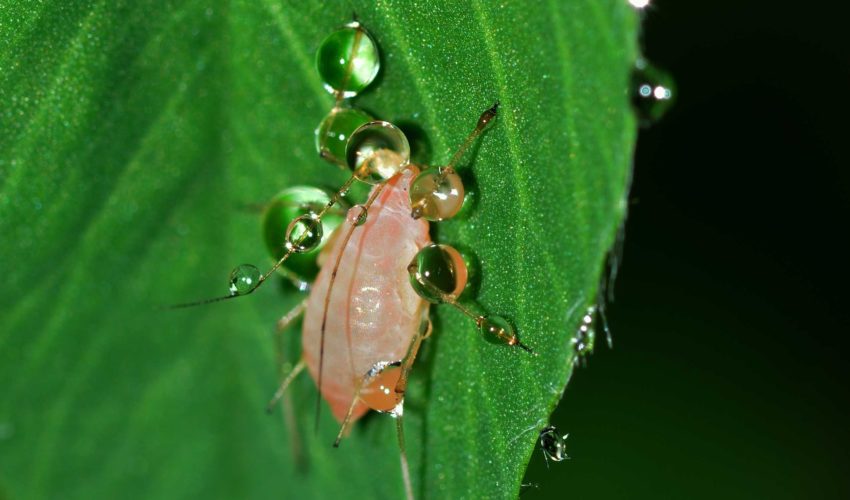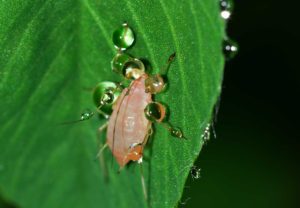
How to Control Insects

The insects have arrived, and they are thoroughly enjoying the leafy buffet of hostas, vegetable plants, hibiscus and well, anything green! Take the time to do a weekly inspection of your plants. Staying on top of insect control is essential. Read on for some of the most common pests that you are likely to encounter in Fayetteville, NC and how to control insects!
Mealybugs
Of all of the pests, Mealybugs are the ugliest! Mealybugs are considered an unarmored scale, which thrive in warm, humid environments. This particular pest is easily identified by its oval-shaped body and white, cotton-like appearance. As a “sucking insect,” mealybugs insert a sucking mouthpart into the leaves and stems of the plant and pull the sap from the plant. As the mealybug zaps the life from your plant, you will begin to notice the leaves yellowing and rolling inward.
The cure: For extremely light infestations, dab a cotton swab in rubbing alcohol and gently whip away the mealybugs. For large infestations, we recommend using neem oil or insecticidal soap.
Aphids
Aphids are sap-sucking insect that are attracted to new growth. Oh, joy! The underside of leaves is where aphids typically reside. Once an infestation has occurred, you will begin to notice yellowing and leaf curl.
Along with aphids, you will also find ants. Aphids secrete a substance called honeydew, which happens to be ants favorite food! Aphids can range from white to light green, to brown depending on their food source. In addition to their different colors, they also have a different appearance throughout their life cycle. Aphids are most distinguishable by their pear-shaped bodies throughout their lives and their long antennae as adults.
The cure: If you are looking for a remedy that doesn’t contain toxins, we recommend using 100% organic Diatomaceous Earth. This product contains tiny fossilized organisms that resemble glass. Once applied to the plant, the aphid will walk over the powder, resulting in tiny cuts throughout its body. Another option is insecticidal soap.
Whiteflies
Due to their name, Whiteflies are extremely easy to identify. They are whiteflies that are triangular! When you shake the plant, a white cloud emerges as all of the whiteflies dissipate. As another sucking insect, whiteflies tend to attack ornamentals and warm-season vegetables. Leaves will typically turn yellow and wilt or curl as the whiteflies deplete the nutrients from the plant. Ants are also accompanied by whiteflies, as this pest also secretes honeydew.
The cure: Whiteflies tend to be resistant to chemical insecticides. For the most effective treatment, use insecticidal soap.
For more updates, check out our Facebook page!
Click here for our events page!
